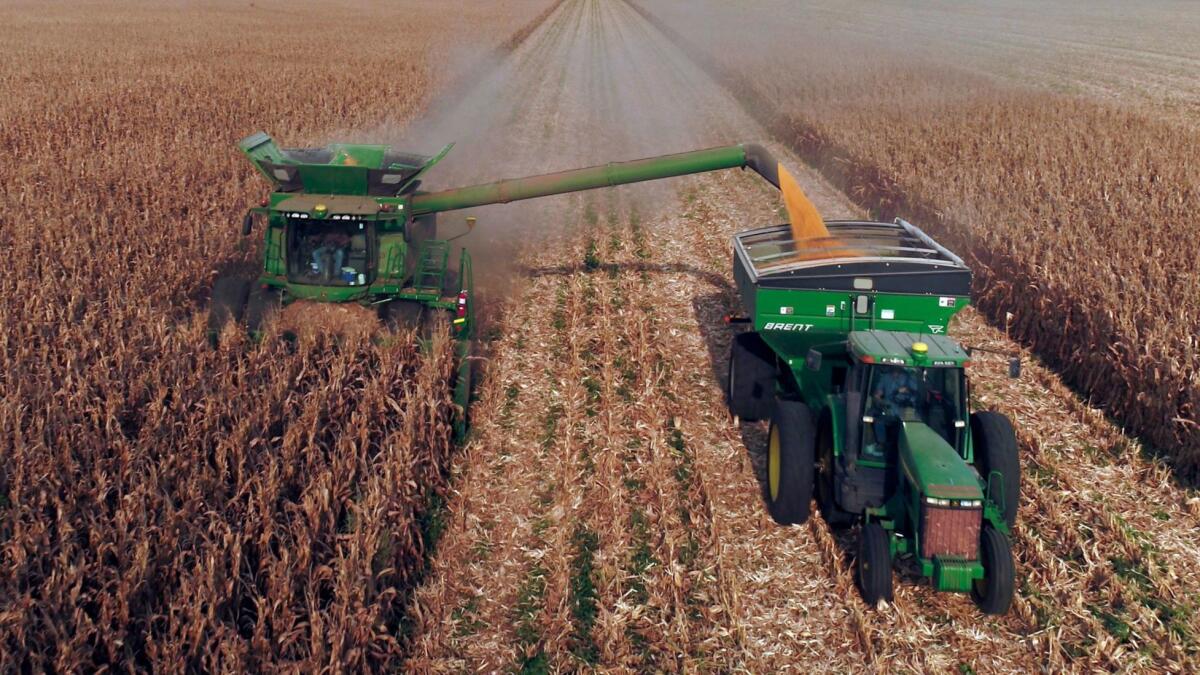U.S. farm bankruptcies surge 24% on strain from Trump trade war

U.S. farm bankruptcies in September surged 24% to their highest level since 2011 amid strains from President Trumpâs trade war with China and a year of wild weather.
Growers are also becoming increasingly dependent on trade aid and other federal programs for income, according to figures in a report by the American Farm Bureau Federation, the nationâs largest general farm organization.
The squeeze on farmers underscores the toll that Chinaâs retaliatory tariffs have taken on a critical Trump constituency as the president enters a reelection campaign and a fight to stave off impeachment. The figures also highlight the importance of a âPhase 1â deal the administration is currently negotiating with Beijing to increase agriculture imports in return for a pause in escalating U.S. levies.
California wineries were expanding into Chinaâs big wine market. Trumpâs trade war is destroying their plans.
Almost 40% of projected farm profit this year will come from trade aid, disaster assistance, federal subsidies and insurance payments, according to the report, based on Department of Agriculture forecasts. Thatâs $33 billion of a projected $88 billion in income.
The trade war and two straight years of adverse weather rattled farmers already facing commodity price slumps.
Chapter 12 bankruptcy filings in the 12 months ended September rose to 580 from a year earlier. That marked the highest since 676 cases in 2011 under the chapter of the bankruptcy code tailored for farms. The total âremains well belowâ historical highs in the 1980s, the federation said.
Recent bankruptcies were concentrated in the 13-state Midwestern region, a key battleground in the presidential election where grain, soybean, hog and dairy farms have been hit by trade disputes. More than 40%, or 255, of the bankruptcy filings were in the region.
More to Read
Inside the business of entertainment
The Wide Shot brings you news, analysis and insights on everything from streaming wars to production â and what it all means for the future.
You may occasionally receive promotional content from the Los Angeles Times.










